The wild soul of Crete: Asterousia mountains
LOCAL GUIDECRETE UNCOVEREDOUTDOOR ACTIVITIES
Author: Tonia
6 min read
Asterousia mountains: Crete’s secret mountain world
In southern Crete, the Asterousia mountains rise from the coast into the Libyan Sea, embodying the wild soul of this rugged and authentic landscape. The area is full of small stone villages, open plains, and quiet beaches known mainly to locals. Rich in history and nature, it is a place where you can hike, explore, and experience life as locals do. For travelers who want to see Crete beyond the usual spots, Asterousia offers a hidden and authentic side of the island.
Hiking, beaches, and secret coves
Asterousia is a paradise for those who love walking and exploring. Trails run along ridges, through gorges, and past caves that were once homes for hermits. Some hikes, like the route from Agios Ioannis to Koudoumas Monastery, are easy and offer amazing views—cliffs dropping into the Libyan Sea, wildflowers in spring, and small chapels along the way.
For adventure seekers, canyoning near Kapetaniana, at spots like Ai Giannis and Mesorinios, is a real challenge. Even if you prefer something calmer, walking among olive groves or following a goat trail to a hidden cove feels like stepping back into ancient Crete.
The mountains that protect and inspire
Asterousia has always been Crete’s natural fortress, guarding the fertile Messara plain from pirates and invaders. Villagers once used the high peaks as lookouts, sending smoke signals if danger came from the sea. Even during World War II, the mountains were a key vantage point for resistance fighters against the occupying Germans.
If you enjoy local festivals or want to see faith in daily life, visit on August 15th. Koudoumas Monastery comes alive with music, food, and prayers. The drive may be steep, but the views and the chance to experience Crete’s traditions make it worth the journey.
Tonia’s Cottage in Alagni village is an ideal base for exploring Asterousia and Crete’s hidden, off-the-beaten-path spots. After exploring the mountains, return to the comforts of village life, with Arkalochori’s vineyards and the stories of Knossos just a short drive away.
Come experience Crete through its people, its food, its wind-worn paths. Let it meet you not as a tourist, but as someone seeking something real.
Tonia ❤️
*Images courtesy of GeoTour: Virtual Tours of Crete's Landscape & Eco-Tourism, www.geotour.gr.
Getting there: The adventure begins
The drive to Asterousia from Heraklion is an adventure in itself—about 64 kilometers through villages like Agioi Deka, Vagiona, Loukia, and Kapetaniana. Locals call it a road for the patient and careful. It climbs through rocky landscapes and past ravines where golden eagles and vultures soar. With every turn, you feel the isolation and spirit that have shaped Crete’s independent character.
Kapetaniana, at 750 meters below Kofinas peak, is a great base for exploring the mountains. The ecotourist guesthouse Thalori, made of restored stone homes, serves traditional Cretan breakfasts and hearty meals throughout the day. Its owners offer activities like hiking, cooking lessons, farming, and 4x4 adventures. For those staying nearby, Kapetaniana makes a perfect day trip or overnight stop to experience the heart of southern Crete.
Travel tip:
Since roads are narrow and rough in places, renting a car is a practical must for exploring Asterousia. Read our guide for tips on “Why renting a car in Crete is a good idea”.
Among the most beautiful beaches in the range is Tripiti—a small, pebbly spot shaded by tamarisk trees, with clear waters perfect for a swim after a morning hike. For more seclusion, try Elygia beach near Agios Ioannis, reached by an easy walking path and known for its thick golden sand. These southern beaches are mostly untouched and often empty, even in summer. Bring water and snacks, and respect nature—there are few facilities, but plenty of peace and quiet.
Insider tip:
To fit in, greet others with a cheerful “Kalimera!” (good morning) and ask older locals about legends of shipwrecks, pirates, or saints. Many are happy to share stories passed down through generations.
Connecting Asterousia to your holiday
Asterousia reveals Crete in its purest form. From rugged trails and quiet coves to mountain villages where traditions thrive, every moment shows a land that is both untamed and welcoming. Adventure, beauty, and local life meet at every turn.
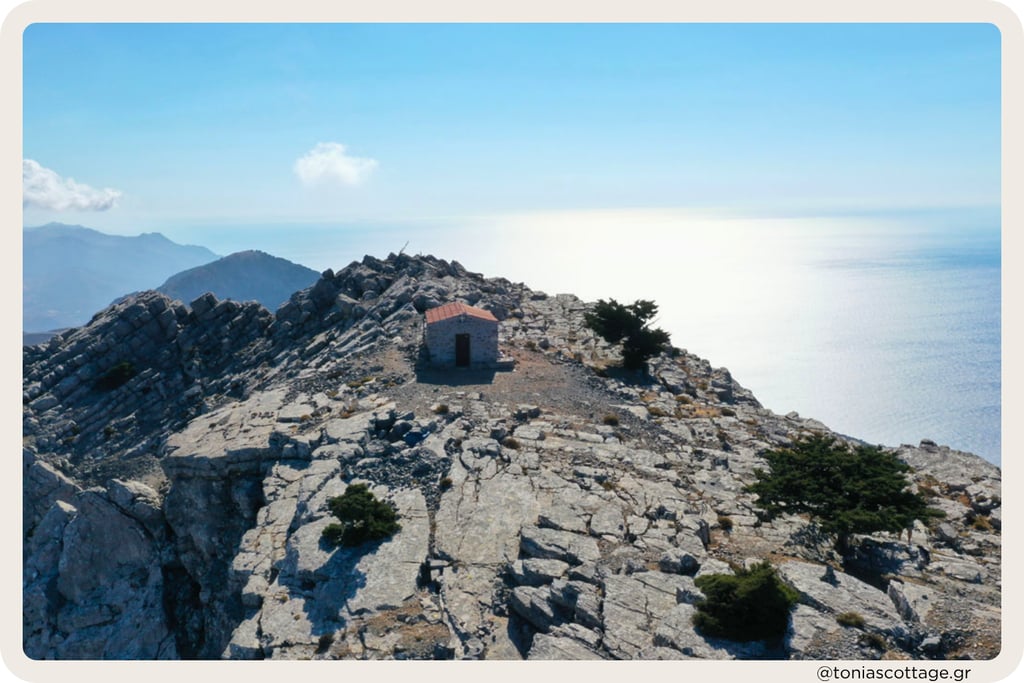

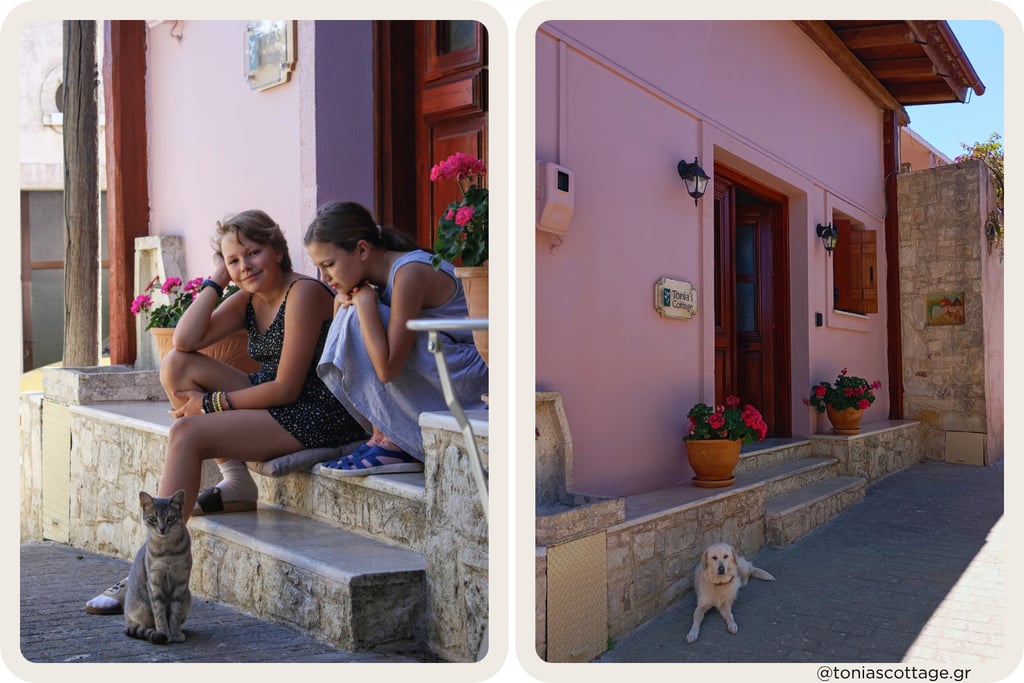


Food for the journey: Simple joys and local flavors
After exploring Asterousia’s rugged beauty, head 30 kilometers to Lentas and visit Taverna Nikitas—a charming spot right by the sea. It’s the last of three tavernas along the way, but the walk is worth it. Enjoy traditional, home-cooked food in a relaxed setting with stunning sea views—a perfect place to unwind and taste authentic Cretan flavors.
Locals in these mountain villages keep old traditions alive, making cheese and honey, growing grapes and olives, and sharing customs passed down through generations. If you visit during a festival, expect dancing, laughter, plenty of food, and the warm sense of community that lies at the heart of Crete.
Sustainable mountain living: Crete’s wise traditions
What makes Asterousia truly special is how its villages have endured, finding balance with the raw landscape. Here, sustainability isn’t a trend—it’s simply the way of life. People farm small plots, care for flocks, and adapt to the region’s challenging climate. The range’s semi-arid terrain and rare rainfalls mean locals respect every drop of water and every bit of pasture.
Many communities in Asterousia still carry on age-old practices: restoring old homes with local stone, using handmade wooden ceilings, and weaving village lore into everyday hospitality. If you want to see how Crete remains true to its roots, explore these villages as a respectful guest, not just a passing tourist.
Further reading:
Find tips for local life and connections in below blog post “Live like a local: Alagni’s annual village celebration”.
Planning your visit: Practical tips
To make the most of your trip into Asterousia, plan ahead:
Distance from Tonia’s Cottage (Alagni village) to Kapetaniana:
About 65 km; allow at least 1.5 hours by car each way, as mountain roads are slow but scenic. (Check Google maps route)Best Seasons:
Spring & Autumn: Ideal for hiking and bird watching, with cooler temperatures and vibrant wildflowers. These seasons are when migratory birds pass through and resident species are most active.
Summer: Perfect for beach outings, but always bring sun protection and plenty of water.
Bird watching:
The Asterousia Mountains are an outstanding destination for bird watchers, thanks to their varied habitats—from rugged cliffs and gorges to lowland shrublands and coastal areas. Over 100 species of birds can be spotted here, including birds of prey like the Bonelli’s eagle and griffon vulture, as well as diverse songbirds and rare endemic species. Seasonal migrations bring additional sightings, especially in spring and autumn. Early morning or late afternoon are the best times to catch birds in action. (Read more about birdwatching).Hiking trails:
The Asterousia region features over 60 hiking paths, with 14 specially designed routes that seamlessly blend mountainous terrain and lowland landscapes. To make the most of your hikes, wear sturdy shoes, bring a hat, and dress in light, layered clothing to adapt to changing weather. A map is highly recommended, as some trails are only marked by cairns or follow goat paths. (Check Korfinas Peak hike)Respect local customs:
Always ask before photographing people or sacred sites like chapels. Greeting locals with a smile and openness is appreciated and enriches your experience in these traditional villages.Resources:
Read more about the mountain range in Asterousia mountains guide.
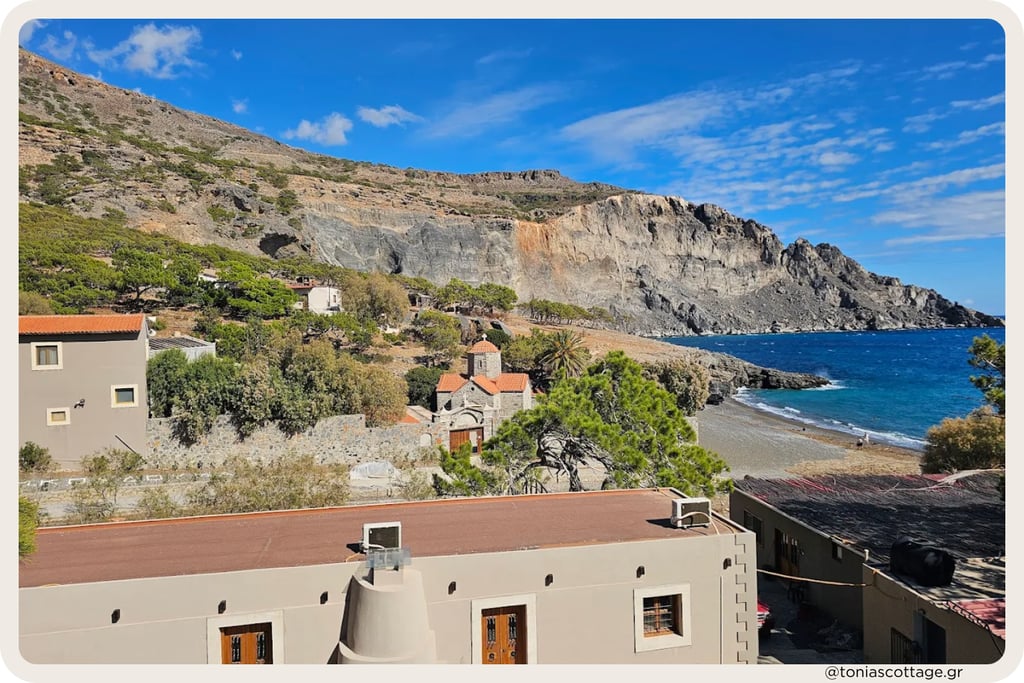

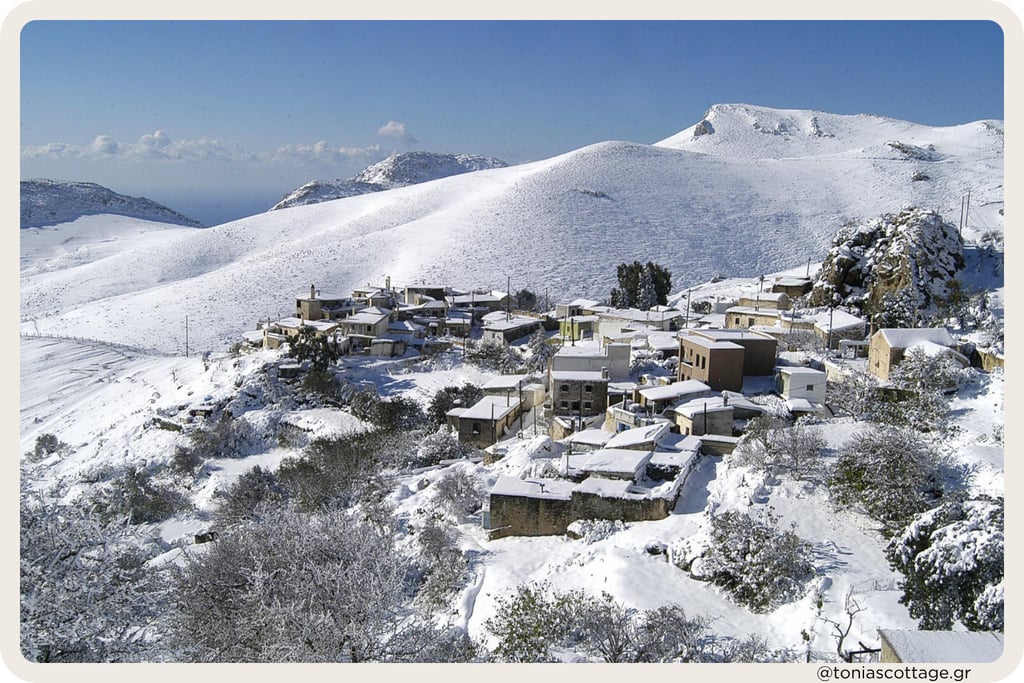

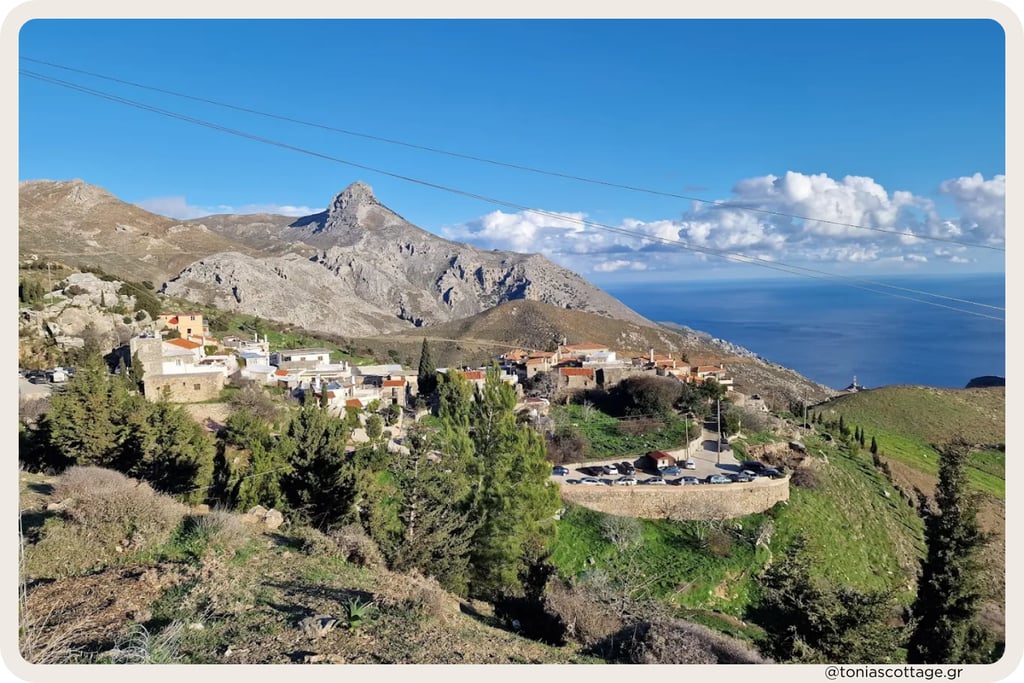

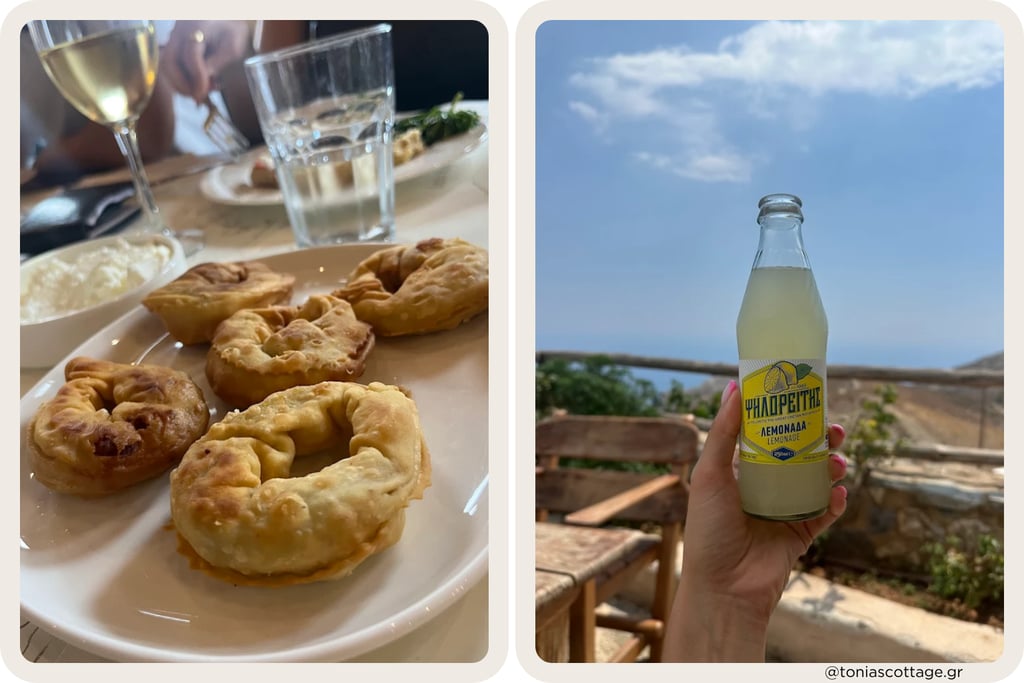

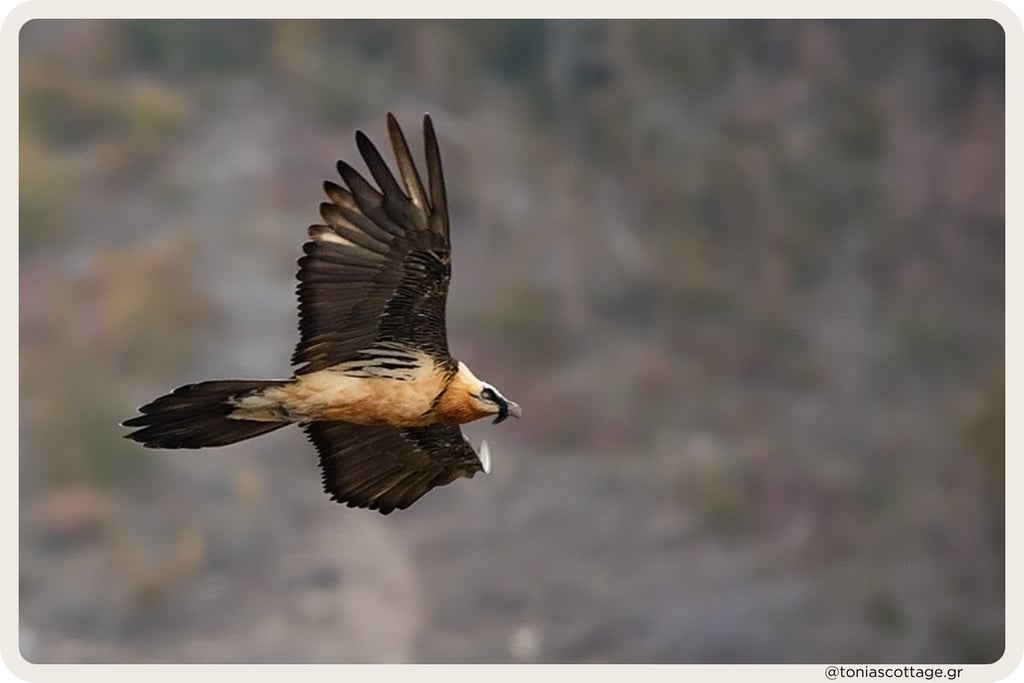

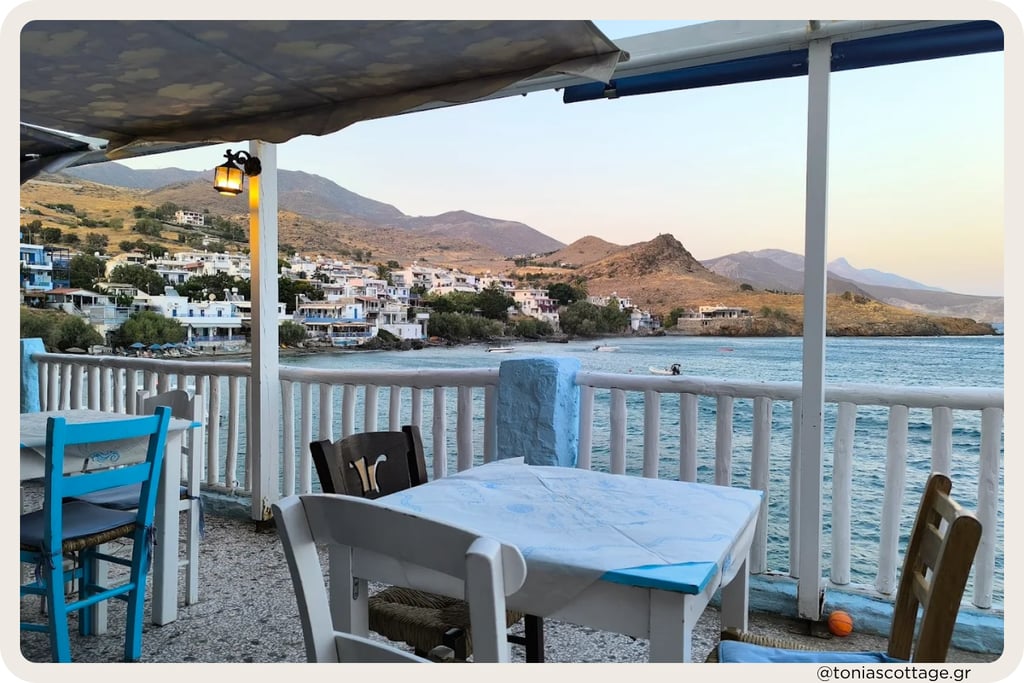

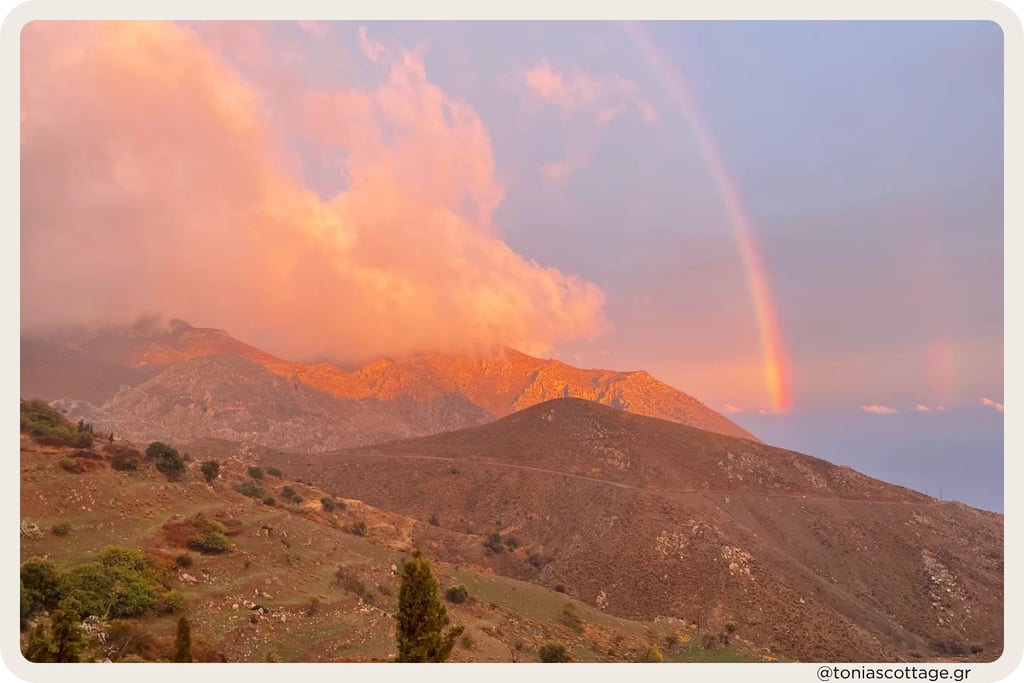

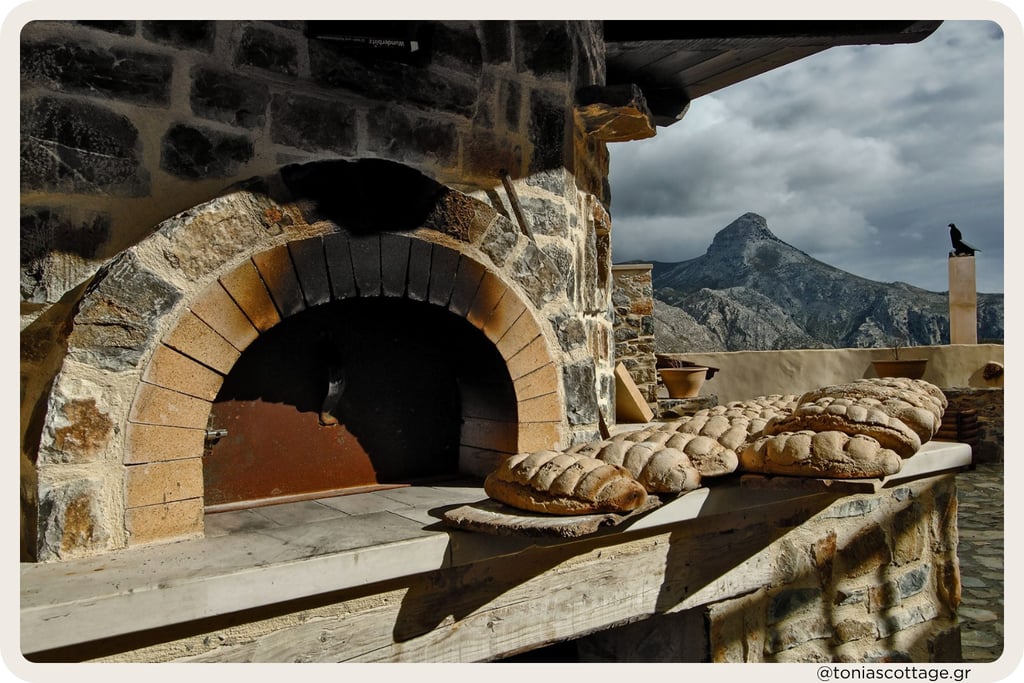

Address
Tonia’s Cottage
Alagni Village, 70300 Arkalochori
Crete Island, Greece
Contact details
(+30) 697 054 0969 (WhatsApp)
info@toniascottage.gr
https://linktr.ee/toniascottage
Made with ❤️
© 2024 Tonia's Cottage | All Rights Reserved
Airbnb | Booking.com | HomeToGo | Vrbo
Property Registration Number (AMA): 00002660089
